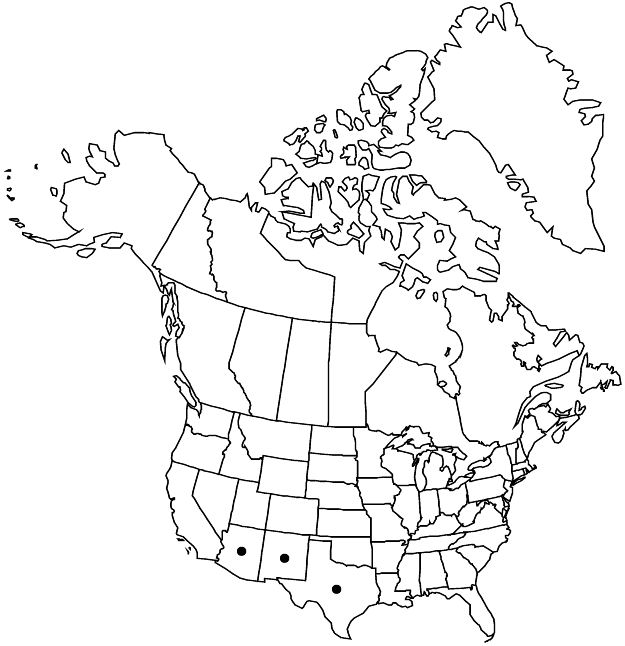Croton pottsii
Prodr. 15(2): 561. 1866.
Herbs, perennial, 1–6 dm, monoecious or dioecious. Stems several from base, sparsely branched distally, stellate-hairy. Leaves sometimes clustered near inflorescences; stipules rudimentary; petiole 0.5–2 cm, glands absent at apex; blade ovate-oblong, proximal rounder, distal more ovate-elliptic, 1–6 × 1–3 cm, base rounded, margins entire, apex rounded to acute, both surfaces pale to ashy green, softly stellate-hairy. Inflorescences bisexual or unisexual, racemes, 0.5–2.5 cm, staminate and pistillate flowers each (12–) 20–25. Pedicels: staminate 1.5–6 mm, pistillate 1–3.5 mm, ± recurved in fruit. Staminate flowers: sepals (4–) 5, 1–1.5 mm, abaxial surface densely stellate-hairy; petals (4–) 5, oblong-lanceolate, 1–1.3 mm, abaxial surface glabrous except margins villous; stamens 10–15. Pistillate flowers: sepals 5, equal, 1.5–3 mm, margins entire, apex straight to slightly incurved, abaxial surface glabrous except stellate-hairy at apex; petals 0; ovary 3-locular; styles 3, 0.5–4.5 mm, 2-fid to base, terminal segments 6. Capsules 4–6 (–7) × 4–5 mm, smooth; columella apex with 3 sharp projections. Seeds 3.5–4 × 2–2.5 mm, shiny. 2n = 20.
Distribution

Ariz., N.Mex., Tex., n, c Mexico
Discussion
Varieties 2 (2 in the flora).
The affinities of Croton pottsii lie with C. lindheimerianus and C. monanthogynus.
Selected References
None.
Key
| 1 | Stems straight; erect radii of stellate hairs shorter than lateral radii, thus pubescence appearing appressed and smooth; leaf blades 1.6–6 cm; racemes mostly 1.1–2.5 cm; styles 1.1–4.5 mm; capsules 4–6(–7) mm. | Croton pottsii var. pottsii |
| 1 | Stems somewhat zigzag; erect radii of stellate hairs longer than lateral radii, thus pubescence appearing ± shaggy; leaf blades usually 1–1.4 cm; racemes mostly 0.5–0.9 cm; styles usually 0.5–1 mm; capsules 4 mm. | Croton pottsii var. thermophilus |
"connate" is not a number. "distinct" is not a number.